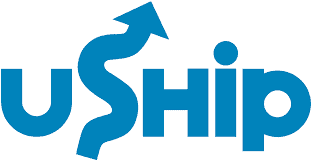A minimum order quantity (MOQ) is the minimum number of units a company will sell at one time. MOQ primarily refers to wholesale volumes and generally applies to wholesale companies that will not sell a single mug, tire or computer but require a minimum order volume to make a profit. MOQ varies by industry, product and business location but can range from hundreds to thousands of products. How do you calculate MOQ for your business to stay profitable? Read on!
How Does MOQ Work in the Supply Chain?
MOQ helps businesses cover the costs of goods and services to get beyond the break-even point. Wholesale prices are generally significantly lower than retail prices, but that is partially because the volume makes up for the lower per-unit cost. Businesses can set MOQ by dollar value or number of items.
For example, a company may sell a chair that costs $100 wholesale and requires a minimum of 100 units or $10,000. This helps to cover the cost of materials, production and distribution. Without an MOQ, businesses can face low operating capital.
Supply chain issues can exacerbate faulty margins or poor operations and jeopardize businesses. In fact, running out of capital was the No. 1 reason companies went out of business in 2021. With MOQ, supply chain issues can be at least partially mitigated.
Sme of the most frequently asked questions about MOQ are covered below:
How is Inventory Impacted by MOQ?
MOQ affects inventory as it correlates to warehouse stock. A high MOQ will require larger storage space and will lead to greater inventory fluctuations. If a company’s MOQ is 10,000 units, the company will need sufficient inventory to account for lead times. When a single unit of 10,000 is sold, companies will also need to resupply inventory efficiently — something supply chain issues can hinder.
Why Do Companies Have MOQs?
Companies have an MOQ to offer the best price possible to customers while covering costs. MOQs are a way to increase profitability and ensure that customers’ demand is met efficiently. Bulk purchasing is more cost-effective and efficient, while MOQ ensures that the cost of materials, production and transport are adequately covered and the business is doing better than breaking even.
Can You Negotiate MOQ?
Yes, you can negotiate MOQ. Some companies will be unwilling to negotiate, but many are willing to negotiate at least 30%.
How Do I Choose an MOQ?
There are different formulas companies use to choose an MOQ. One is to calculate the break-even point for a certain volume. Another is to look at the gross profit margin per unit and compare that to overall production costs. To calculate MOQ accurately, you’ll need to include total production costs that include administration, marketing, storage, transportation and materials.
Target customers will also influence MOQ. If the primary clients are small retailers, the MOQ will be smaller than if the company sells to big-box retail chains or other wholesalers.
Generally, there are three points to consider to choose an MOQ:
- Break-even point: The break-even point refers to the number of units sold at a fair market price necessary to make a profit. This must include all manufacturing costs, from labor and production to delivery.
- Demand: Historical data can help forecast current demand. If typical orders are for 100 units, setting an MOQ of 10,000 won’t be practical. On the other hand, you may be able to successfully set an MOQ of 150.
- Holding costs: How much does it cost to store the products? If items are large, odd-shaped and require a temperature-controlled environment or refrigeration, holding costs may be higher. For efficient warehouse management, you’ll want to set an MOQ where products move regularly and the available space can accommodate the necessary volume.
Types of MOQs
Two types of MOQs reflect different business requirements and economic environments associated with production and delivery. Simple MOQs are a single value — a minimum order volume or dollar amount. Complex MOQs have varying limits. Here’s how each one stacks up:
Simple MOQ
Simple MOQs are the most common type of MOQ you’ll encounter. Simple MOQs set a single lower limit. You’ll encounter simple MOQs for everything from book publishers to wholesale furniture suppliers. For example, most book publishers won’t print 10 copies of a book. They may have a minimum of 100, 1,000 or another amount.
Companies can also set minimum dollar sales amounts. For example, they may have a minimum order value of $1,000 or $10,000.
Complex MOQs
Complex MOQs have more than one requirement for an order. One area where you’ll commonly see complex MOQs is clothing manufacturing. In addition to a minimum order volume or dollar amount, the manufacturer may require a minimum in a certain color or length of fabric. In this example, the complex MOQ may require a minimum number of units or dollar amount as well as a minimum of fabric per color or type of fabric.
Other examples include electronics manufacturers, which may have an MOQ for dollar value as well as an MOQ per item.
Advantages of Using MOQs
MOQs have many advantages, from better inventory management to improved cash flow. MOQs can improve warehouse management efficiency, reduce low stock inventory and most importantly, improve profit margins. Pros of using MOQs:
- Improved cash flow
- Better warehouse management
- Improved inventory management
- Lower inventory cost
- Improved profit margins
High MOQs vs Low MOQs
High MOQ versus low MOQ refers to the total minimum order quantity. A low MOQ will have lower inventory storage costs, less total inventory and higher inventory turnover. Many define a low MOQ as any quantity of 50 or below. Low MOQ is useful to buyers because they are more accessible to small retailers, and even larger retailers can purchase a small volume to test an item’s performance.
On the other hand, high MOQs will have greater inventory storage needs and may have lower inventory turnover. Companies with high MOQs will also need to tie up more working capital in inventory. For manufacturers and buyers, the advantage of higher MOQs is usually in volume discounts. Items with higher MOQs usually have a lower per-unit price. Higher MOQs also reduce the risk of stockouts and can lead to faster order fulfillment.
Inventory turnover and production costs are the primary deciding factors for a company when it comes to choosing between high MOQs and low MOQs. For large companies, higher MOQs make sense for their business model. But for smaller companies, lower MOQs reduce storage costs, tie up less capital in unsold inventory, reduce workforce needs and reduce the risk of collecting dead stock.
Final Thoughts on Setting MOQs
Setting an MOQ makes sense for every nonretail business. Whether the MOQ is five or 5,000 will depend on the industry, product and target customers. Some companies may even set multiple MOQs for the customer type. A well-calculated MOQ can serve your business model to optimize capital, inventory storage and prevent delivery delays related to supply-chain issues. Successfully developed, an MOQ will help improve company cash flow and long-term growth.
Sign up for a FreightWaves e-newsletter to stay informed of all news and trends impacting supply chain careers and operations.


